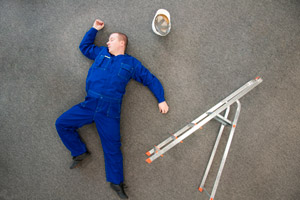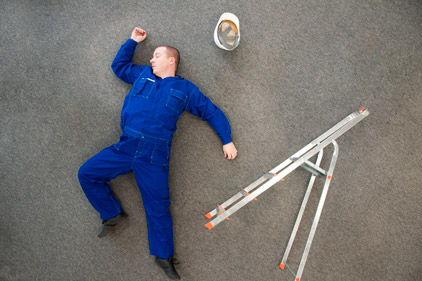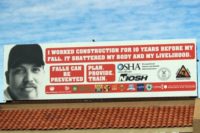 FALLS ARE THE LEADING CAUSE OF DEATH IN CONSTRUCTION. In 2010, there were 264 fall fatalities (255 falls to lower level) out of 774 total fatalities in construction. These deaths are preventable.
FALLS ARE THE LEADING CAUSE OF DEATH IN CONSTRUCTION. In 2010, there were 264 fall fatalities (255 falls to lower level) out of 774 total fatalities in construction. These deaths are preventable.
Falls can be prevented and lives can be saved through three simple steps:
PLAN ahead to get the job done safely
When working from heights, such as ladders, scaffolds, and roofs, employers must plan projects to ensure that the job is done safely. Begin by deciding how the job will be done, what tasks will be involved, and what safety equipment may be needed to complete each task.
When estimating the cost of a job, employers should include safety equipment, and plan to have all the necessary equipment and tools available at the construction site. For example, in a roofing job, think about all of the different fall hazards, such as holes or skylights and leading edges, then plan and select fall protection suitable to that work, such as personal fall arrest systems (PFAS).
PROVIDE the right equipment
Workers who are six feet or more above lower levels are at risk for serious injury or death if they should fall. To protect these workers, employers must provide fall protection and the right equipment for the job, including the right kinds of ladders, scaffolds, and safety gear.
Different ladders and scaffolds are appropriate for different jobs. Always provide workers with the kind they need to get the job done safely. For roof work, there are many ways to prevent falls. If workers use personal fall arrest systems (PFAS), provide a harness for each worker who needs to tie off to the anchor. Make sure the PFAS fits, and regularly inspect all fall protection equipment to ensure it's still in good condition and safe to use.
TRAIN everyone to use the equipment safely
Falls can be prevented when workers understand proper set-up and safe use of equipment, so they need training on the specific equipment they will use to complete the job. Employers must train workers in hazard recognition and in the care and safe use ladders, scaffolds, fall protection systems, and other equipment they'll be using on the job.
OSHA has provided numerous materials and resources that employers can use during toolbox talks to train workers on safe practices to avoid falls in construction. Falls from ladders, scaffolds and roofs can be prevented and lives can be saved through three simple steps: Plan, Provide and Train.


